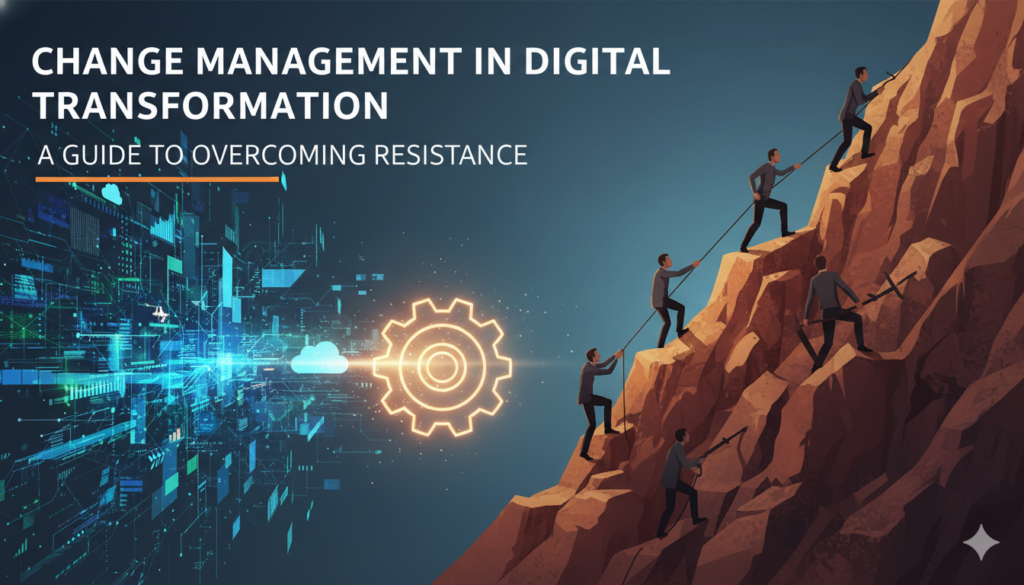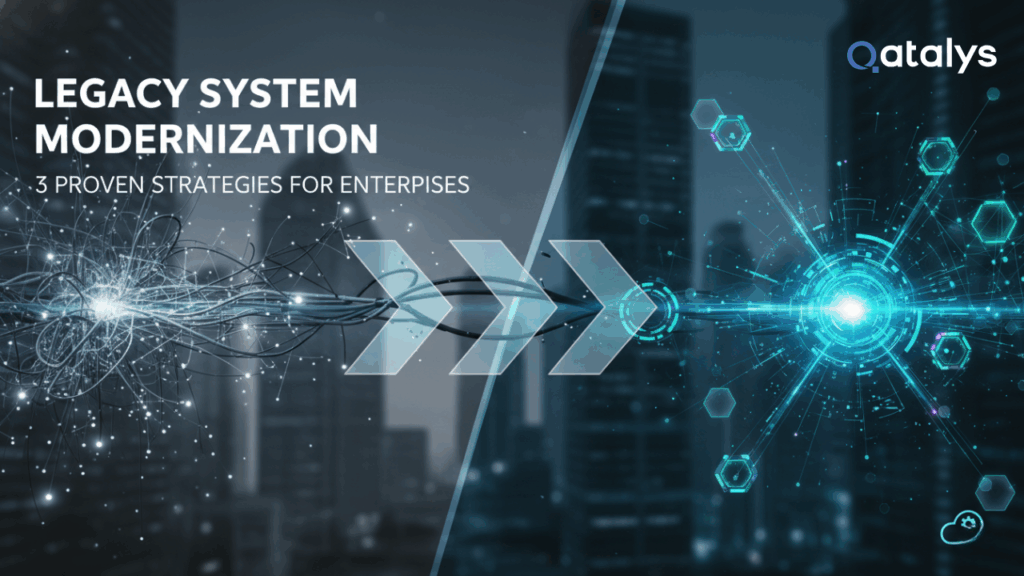Global Capability Centers (GCCs) have undergone a dramatic transformation over the last decade. What started as a model for operational efficiency is now a blueprint for innovation at scale. In 2025, GCCs are no longer just delivery arms – they’re fully embedded, AI-enabled, cloud-native extensions of enterprise strategy.
This shift is more than cosmetic. As AI adoption accelerates, cloud platforms become the default, and distributed teams become the norm, GCCs are redefining how companies scale technology, talent, and transformation across borders.
For CTOs, COOs, and digital leaders, the next wave of GCC development is not about more headcount – it’s about building smarter, faster, and more resilient global teams.
In this blog, we break down the top trends shaping GCCs in 2025 – from the rise of AI-native operating models to the surge in GCC-as-a-Service adoption. If you’re planning a global buildout or refining your tech delivery model, these are the shifts you can’t afford to ignore.
Trend #1: AI is the Default, Not a Pilot
In 2025, AI is no longer an experimental layer sitting on the side of business functions – it’s becoming the core of how GCCs operate.
What began with pilot projects in data science and automation has evolved into AI-native workflows embedded across development, product, and operations. Enterprises are no longer asking “Can we use AI?” – they’re designing GCCs specifically to build, deploy, and evolve AI-powered systems.
What This Looks Like Inside GCCs:
- Generative AI for content, code, and customer experience design
- Machine learning models for risk scoring, churn prediction, personalization
- AI-enabled DevOps (AIOps) for intelligent monitoring and incident resolution
- Prompt engineering as a formal role in product and engineering pods
What Enterprises Are Doing:
- Embedding AI capability into every team – not just centralized CoEs
- Hiring AI architects, data product managers, and MLOps engineers
- Prioritizing AI tooling, GPU stack optimization, and LLM integrations into core platforms
As a result, GCCs are becoming the engine rooms of enterprise AI – not just supporting transformation, but creating it.
Trend #2: Cloud-Native + DevSecOps as the Foundation
In 2025, cloud adoption is no longer optional – and GCCs are expected to lead the way in building secure, scalable, and agile digital platforms from day one.
Gone are the days of treating cloud migration as a long-term IT initiative. Today’s GCCs are born cloud-native, with DevSecOps practices hardwired into their delivery DNA. Infrastructure, deployment, and security are automated, observable, and aligned to business velocity.
What This Looks Like in Practice:
- Microservices and containerized architectures (e.g., Kubernetes)
- CI/CD pipelines with built-in testing, rollback, and auto-deploy
- Infrastructure-as-code (Terraform, Pulumi)
- Real-time observability through tools like Datadog, New Relic, or Prometheus
- Shift-left security embedded into dev workflows (DevSecOps)
The Impact:
- Faster releases with fewer manual interventions
- More secure codebases without slowing development
- Predictable infrastructure that scales on demand
- Greater reliability and compliance for regulated industries
As enterprise systems get more complex, cloud-native GCCs with DevSecOps at the core will be the ones delivering speed, safety, and scalability at once.
Trend #3: Product Ownership is Going Global
One of the most defining shifts in 2025 is that GCCs are no longer just delivery centers – they’re owning core parts of the product.
In earlier models, offshore teams executed what HQ defined. But now, mature GCCs are leading sprints, defining roadmaps, and taking end-to-end accountability for product modules – from UX to architecture, deployment, and iteration.
What This Means in Practice:
- GCC pods managing entire verticals – like payments, onboarding, risk, or analytics
- Product managers, designers, and engineers co-located within the GCC
- Direct collaboration with global stakeholders in roadmap planning
- Ownership of KPIs like feature adoption, performance, and customer satisfaction
Why This Shift Matters:
- Frees up HQ teams to focus on strategy and vision
- Unlocks 24/7 product iteration across time zones
- Builds deeper expertise and innovation mindset in offshore teams
- Accelerates global readiness by building region-aware products
The future of global delivery isn’t just engineering support – it’s product-driven, business-aligned teams working as extensions of the core organization.
Trend #4: Multi-Hub, Distributed Delivery Models
The days of a single, centralized GCC handling all offshore operations are fading. In 2025, enterprises are increasingly adopting multi-hub GCC strategies – spreading capability centers across regions to balance resilience, talent access, and geopolitical risk.
These models reflect a growing need for flexibility and redundancy in global operations. Whether it’s engineering in India, compliance in Eastern Europe, or customer ops in Southeast Asia, companies are creating specialized nodes that work in sync.
What This Looks Like:
- A primary GCC in India focused on engineering + AI
- A secondary GCC in Poland handling cybersecurity + regulatory ops
- A nearshore pod in LATAM for real-time collaboration with North America
- Cross-hub rituals like shared sprint demos, async updates, and centralized DevOps
Benefits of Multi-Hub Delivery:
- Risk diversification (economic, political, operational)
- Access to niche skills across geographies
- Better time-zone coverage for global product cycles
- Ability to scale selectively, based on talent availability and cost efficiency
This distributed model signals a clear shift: GCCs are becoming modular, scalable delivery networks – not isolated locations.
Trend #5: Experience-Led Talent Models
As automation and AI take over repetitive tasks, the value of GCCs will no longer be measured by size – but by quality, creativity, and team performance. In 2025, the best GCCs are focusing not just on who they hire, but how they enable them to thrive.
This means designing employee experiences that attract, retain, and grow high-performing teams – not just filling roles.
Key Shifts in Talent Strategy:
- Prioritizing multi-disciplinary squads over siloed functions
- Offering clear career paths and upskilling in AI, cloud, and product thinking
- Designing digital-first work cultures with hybrid flexibility
- Investing in inclusion, wellness, and leadership development – not just perks
Why It Matters:
- Top engineers now expect meaningful work, not just a paycheck
- Innovation thrives in environments that support autonomy and growth
- Retention improves when employees see the GCC as a long-term home – not a stepping stone
The future of global teams isn’t just tech-led – it’s experience-led. GCCs that design for people as well as performance will be the ones that scale and sustain.
Trend #6: GCC-as-a-Service Gains Momentum
As the complexity of building and scaling traditional GCCs increases, a growing number of enterprises are turning to GCC-as-a-Service (GaaS) models – choosing speed, flexibility, and reduced overhead over full in-house setup.
These managed models offer the best of both worlds: dedicated teams, strategic control, and IP ownership – without the time, capital, or operational drag of building from scratch.
Why It’s Taking Off in 2025:
- Faster time to value: Launch a fully operational GCC in weeks
- No infra investment: Workspace, security, IT, and governance are pre-built
- Full alignment: Teams are integrated into product and platform strategy
- Scalable pods: Add CoEs, feature teams, or support squads as needed
The Qatalys Advantage:
At Qatalys, we deliver GCC-as-a-Service that’s designed for the demands of 2025:
- AI-native, cloud-first, security-ready
- Product-driven teams with real business ownership
- Flexible scale without sacrificing quality or control
Whether you’re a scaling startup or an enterprise expanding into new markets, GaaS offers a lean, smart way to build global capability – without slowing down.
What This Means for Tech + Business Leaders
The trends shaping GCCs in 2025 aren’t just tactical shifts – they’re strategic imperatives for any organization looking to compete in a fast, AI-driven, global market.
For CTOs, COOs, and transformation heads, the mandate is clear: GCCs must be built to deliver innovation, not just output.
To stay ahead, leaders must:
- Design AI-native capabilities into their GCC structure from day one
- Invest in cloud-native platforms and security-forward DevSecOps
- Empower global pods to own product outcomes – not just execution
- Distribute risk and capability across multi-hub models
- Create standout employee experiences that attract and retain top-tier global talent
- Consider managed GCC models to launch faster and scale smarter
Whether you’re expanding engineering capacity, launching an AI CoE, or entering a new market, the right GCC strategy is now a competitive advantage – not a cost center.
Conclusion: GCCs Are Defining the Future of Global Tech Delivery
GCCs have evolved far beyond their roots – and in 2025, they stand at the intersection of AI, cloud, talent, and transformation. The most forward-looking organizations are already treating their GCCs as core innovation assets – not just offshore support arms.
But success in this new landscape requires more than just setup – it demands strategy, agility, and execution at scale. Whether you’re building your first global team or rethinking your current GCC footprint, the path forward is clear: cloud-first, AI-enabled, product-led, and experience-focused.
And if you’re ready to move fast? A managed model might be your best route.
Explore Qatalys GCC-as-a-Service
At Qatalys, we help enterprises and scale-ups launch GCCs designed for 2025 and beyond – AI-ready, cloud-native, and fully aligned to business goals.








